Discover a hidden world of arboreal wonders with our definitive guide to Trees That Start with ‘U’. Whether it’s the versatile Ulmus americana or the stately Uapaca kirkiana, explore their beauty and significance in global ecosystems.
Trees are nature’s quiet heroes. They clean our air, give us shade and make our world beautiful. Today, we’re going to explore some special trees – ones whose names start with the letter ‘U’. These trees might not be as famous as oaks or maples, but they’re just as important and interesting.
Let’s dive into the world of ‘U’ trees and learn what makes them unique!
1. Ulmus americana (American Elm)
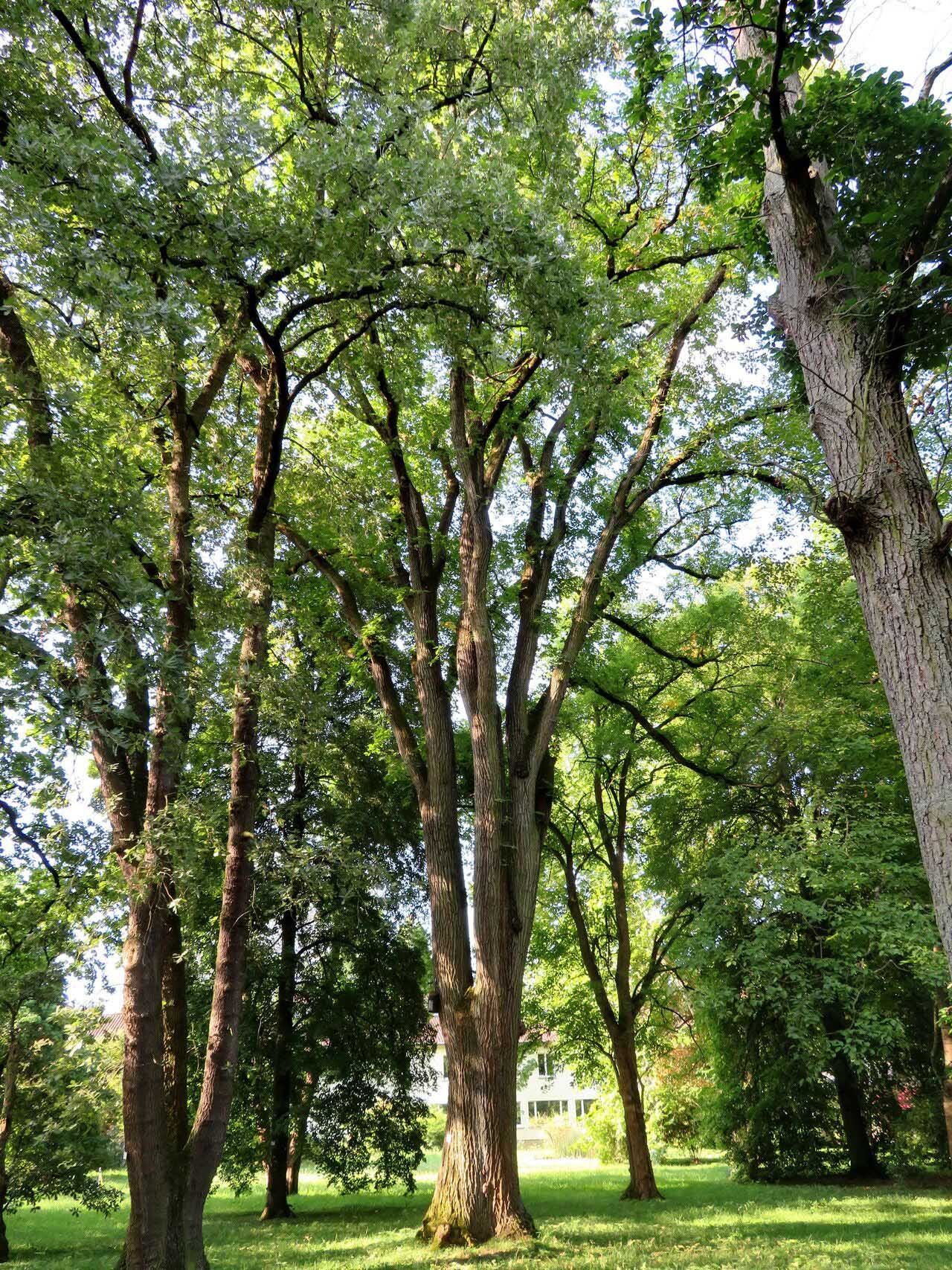
Here’s an easy-to-read and verified information chart for Ulmus americana (American Elm):
| Feature | Details |
|---|---|
| Botanical Name | Ulmus americana |
| Common Name | American Elm |
| Plant Type | Deciduous tree |
| USDA Hardiness Zone | 3-9 |
| Sun Exposure | Full sun to part shade |
| Soil Type | Well-draining, moist soil |
| Watering | Regular |
| Growth Habit | Broadly vase-shaped when young, spreading with age |
| Height/Spread | 60-80 feet tall / 40-60 feet wide |
| Special Features | Distinctive vase-shaped canopy, serrated leaves, provides excellent shade, tolerant of urban conditions, historically used as a street tree |
The American Elm is a tree with a sad but hopeful story. Once, these trees lined streets all over America. They were big and beautiful, with branches that spread out like an umbrella.
But in the 1900s, a disease called Dutch elm disease killed many of these trees. It was a tough time for the American Elm. However, some trees survived and scientists are working hard to bring them back.
American Elms can grow very tall – up to 100 feet! They have dark green leaves that turn yellow in fall. The leaves are oval-shaped and have jagged edges.
These trees are tough. They can grow in many types of soil and can handle cold weather well. That’s why they were so popular for planting in cities.
The wood of the American Elm is strong and flexible. People used it to make furniture, floors, and even boats. Native Americans used the bark to make canoes.
Today, you can still find American Elms in some places. Scientists are breeding new types that can fight off the disease. Maybe one day, these trees will line our streets again.
2. Umbellularia californica (California Bay Laurel)
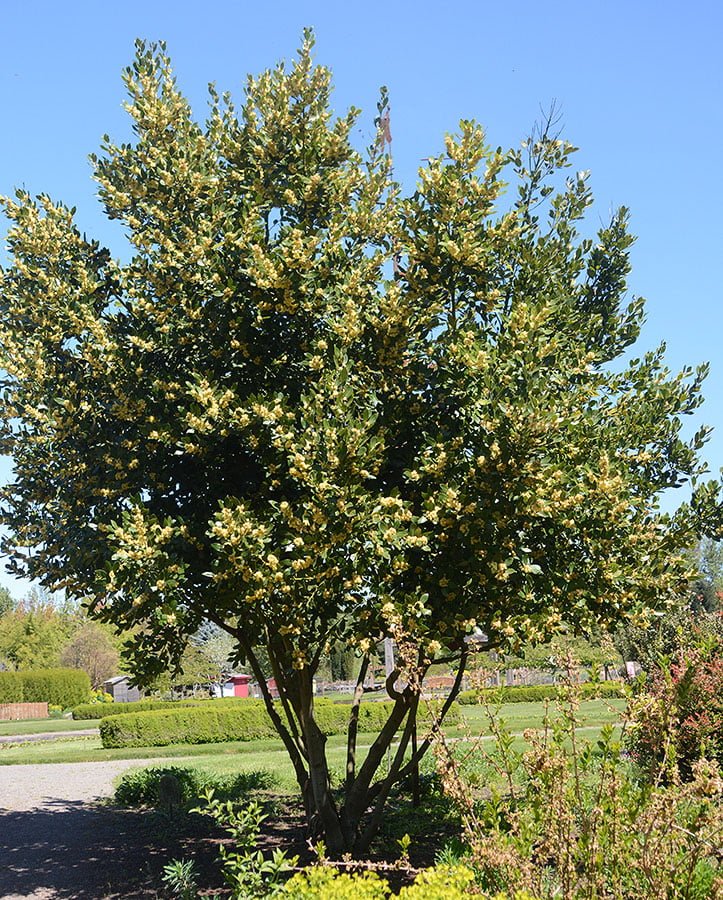
Here’s an easy-to-read and verified information chart for Umbellularia californica (California Bay Laurel):
| Feature | Details |
|---|---|
| Botanical Name | Umbellularia californica |
| Common Name | California Bay Laurel |
| Plant Type | Evergreen tree |
| USDA Hardiness Zone | 7-10 |
| Sun Exposure | Full sun to partial shade |
| Soil Type | Well-draining, fertile soil |
| Watering | Regular; drought tolerant once established |
| Growth Habit | Broad, dense canopy |
| Height/Spread | 30-60 feet tall / 20-40 feet wide |
| Special Features | Aromatic leaves, clusters of small yellow flowers in spring, edible nuts (bay nuts), attracts wildlife, used in cooking and traditional medicine |
The California Bay Laurel is a tree that smells great! If you crush its leaves, you’ll smell a strong, spicy scent. Some people say it smells like bay leaves used in cooking.
This tree is native to California and Oregon. It can grow as a small tree or a big shrub. In forests, it can get up to 100 feet tall. But in drier areas, it might only grow to 20 feet.
The California Bay Laurel has dark green, shiny leaves. They’re long and narrow, like the shape of a canoe. The tree gets small yellow-green flowers in the spring. Later, it grows fruits that look like little green olives.
Native Americans used this tree for many things. They ate the nuts from the fruits and used the leaves for medicine. Today, some chefs use the leaves to flavor food, like the European bay leaf.
These trees are tough. They can live for a long time and don’t need much water once they’re grown. That’s why they’re good for planting in areas that don’t get much rain.
But be careful! The smell from these trees can be very strong. Some people get headaches if they’re around the smell for too long.
3. Uapaca kirkiana (Wild Loquat)
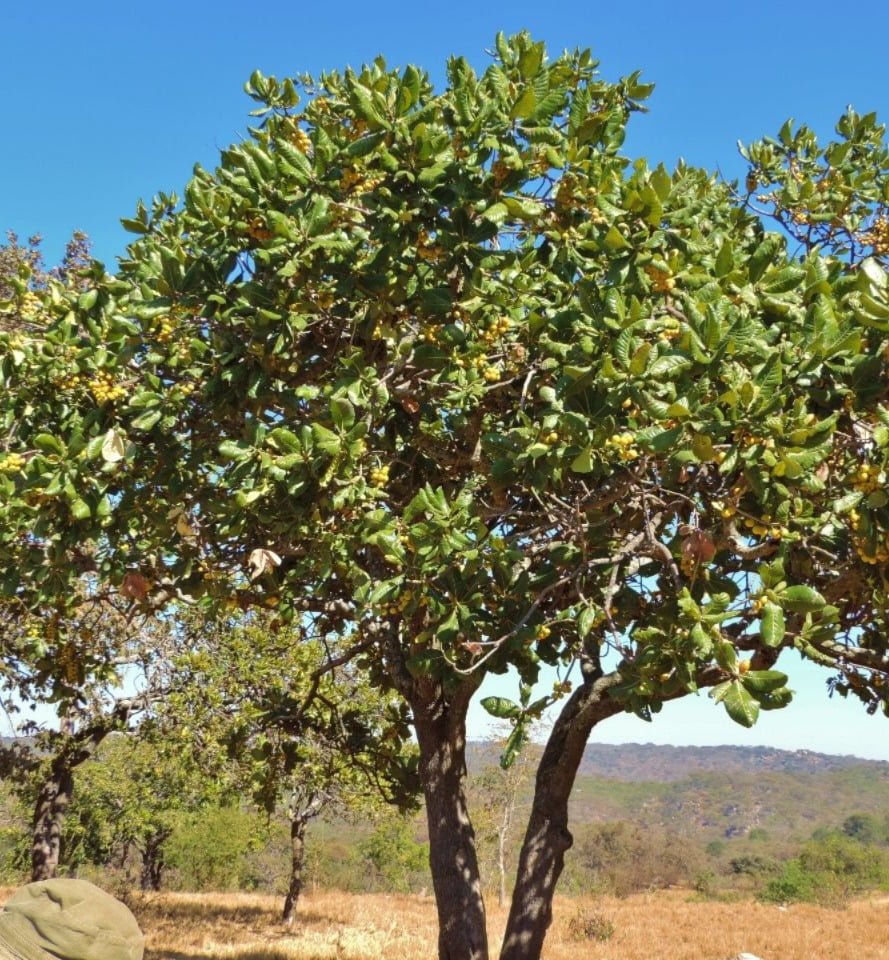
Here’s an easy-to-read and verified information chart for Uapaca kirkiana (African Plum):
| Feature | Details |
|---|---|
| Botanical Name | Uapaca kirkiana |
| Common Name | African Plum |
| Plant Type | Evergreen tree |
| USDA Hardiness Zone | 10-12 |
| Sun Exposure | Full sun |
| Soil Type | Well-draining, sandy to loamy soil |
| Watering | Moderate |
| Growth Habit | Round-headed canopy |
| Height/Spread | Up to 10-20 meters tall / Canopy spread matches height |
| Special Features | Edible fruit (plums), used for food and medicinal purposes, important in African traditional medicine, attracts wildlife, drought resistant |
The Wild Loquat is a tree from Africa. It’s also called the Sugar Plum. This tree is special because it gives food to many people in southern Africa.
Wild Loquat trees are medium-sized. They usually grow to about 35 feet tall. The leaves are dark green and grow in groups at the ends of branches.
The best part of this tree is its fruit. The fruits are round and yellow-brown when ripe. They taste sweet and a bit sour. People eat them fresh or make them into jams and drinks.
These trees are important for wildlife too. Monkeys, birds and other animals love to eat the fruits. The trees also give shade and shelter to many creatures.
Wild Loquats grow naturally in places like Zimbabwe, Mozambique and Malawi. They like warm weather and can handle dry times. People are starting to grow these trees on farms because the fruits are so good.
The wood of the Wild Loquat is also useful. It’s hard and strong, so people use it to make tools and building materials.
4. Ulmus pumila (Siberian Elm)
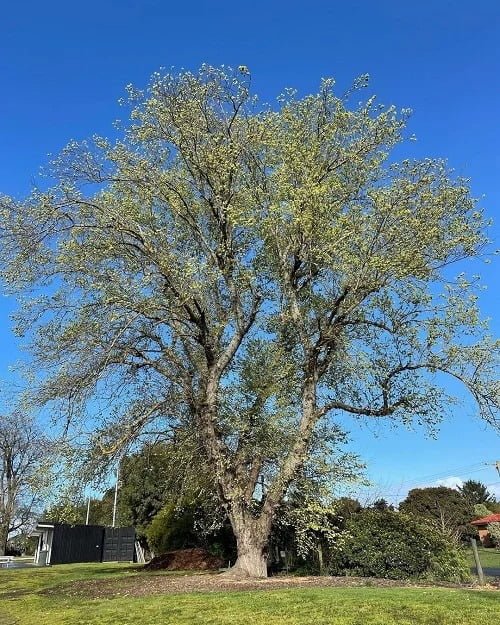
Here’s an easy-to-read and verified information chart for Ulmus pumila (Siberian Elm):
| Feature | Details |
|---|---|
| Botanical Name | Ulmus pumila |
| Common Name | Siberian Elm |
| Plant Type | Deciduous tree |
| USDA Hardiness Zone | 4-9 |
| Sun Exposure | Full sun |
| Soil Type | Wide range, tolerant of various soil types |
| Watering | Moderate |
| Growth Habit | Spreading, rounded canopy |
| Height/Spread | 50-70 feet tall / 40-60 feet wide |
| Special Features | Fast-growing, tolerates urban conditions, small, rounded leaves, used in windbreaks and shelterbelts, can be invasive in some areas |
The Siberian Elm is a tough tree that can grow almost anywhere. It comes from Asia, but now you can find it in many parts of the world.
This tree grows fast and can live in hard conditions. It doesn’t need much water and can handle very cold weather. That’s why it’s called Siberian – it can grow in cold places like Siberia.
Siberian Elms are usually about 50-70 feet tall. They have small, dark green leaves that are oval-shaped with jagged edges. In spring, the tree gets tiny flowers before the leaves come out.
People have planted Siberian Elms in many places because they grow so easily. They’re good for making windbreaks – lines of trees that block strong winds. The wood is also used for making furniture and sports equipment.
But there’s a problem. Siberian Elms can grow too well in some places. They can take over areas where other plants should grow. That’s why some people call it an invasive species.
These trees also drop a lot of seeds and branches. This can make a mess in yards and gardens. Some cities have stopped planting them because of these problems.
Despite these issues, Siberian Elms are still important in some places. In parts of Asia, people use the bark to make medicine.
5. Ulmus alata (Winged Elm)
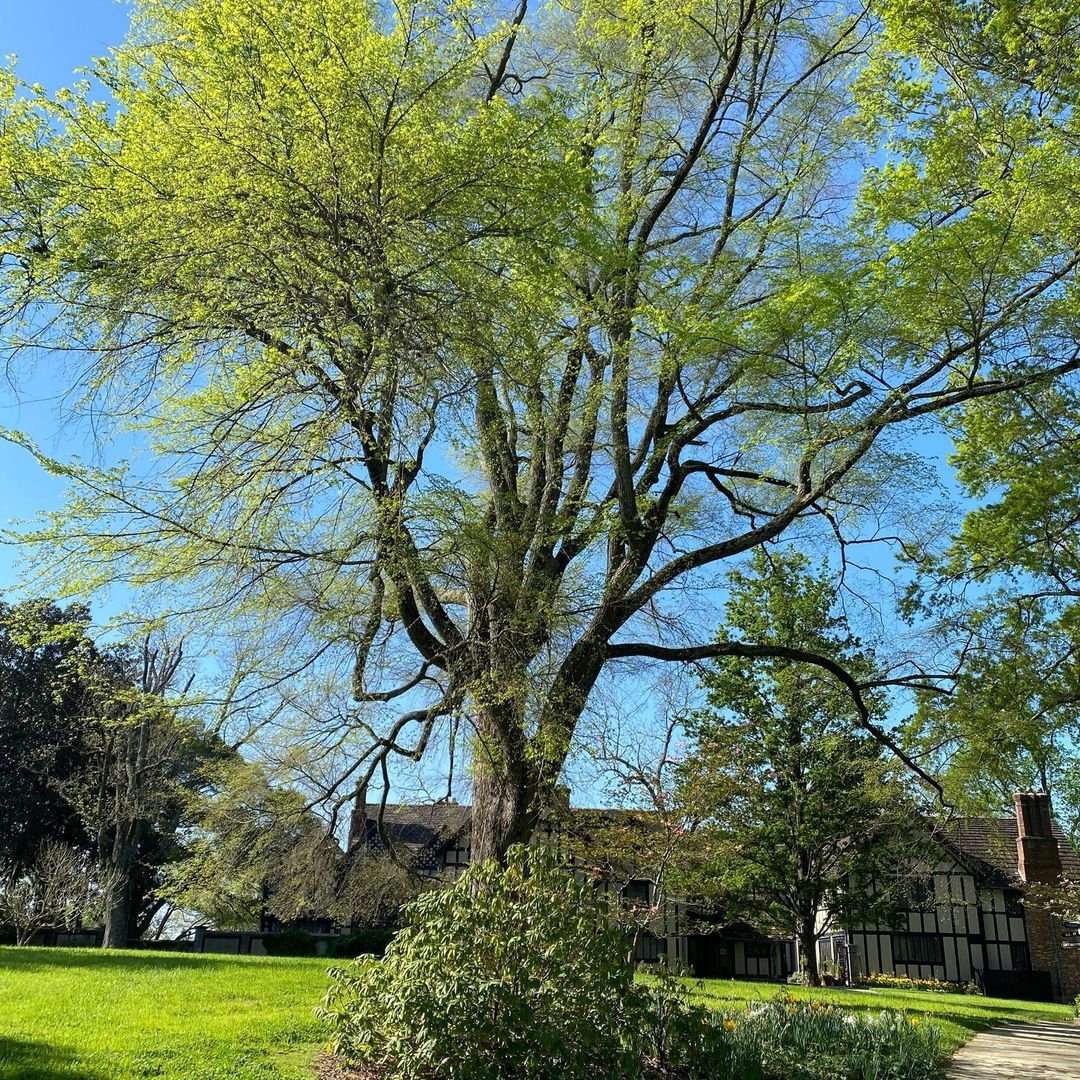
Here’s an easy-to-read and verified information chart for Ulmus alata (Winged Elm):
| Feature | Details |
|---|---|
| Botanical Name | Ulmus alata |
| Common Name | Winged Elm |
| Plant Type | Deciduous tree |
| USDA Hardiness Zone | 5-9 |
| Sun Exposure | Full sun to part shade |
| Soil Type | Well-draining, adaptable to various soil types |
| Watering | Moderate |
| Growth Habit | Upright, rounded canopy |
| Height/Spread | 40-50 feet tall / 35-45 feet wide |
| Special Features | Distinctive corky wings on branches and twigs, small deciduous leaves, attractive to wildlife, tolerates urban conditions |
The Winged Elm is a unique tree from the southeastern United States. It gets its name from the odd, wing-like growths on its branches.
These wings are flat, corky ridges that grow along the branches. They make the tree easy to spot, even in winter when it has no leaves.
Winged Elms are usually small to medium-sized trees. They grow to about 40-50 feet tall. The leaves are small and oval-shaped with jagged edges. In fall, the leaves turn yellow.
This tree is tough and can grow in many types of soil. It can handle dry conditions and doesn’t mind air pollution. That’s why it’s sometimes planted in cities.
The Winged Elm is good for wildlife. Many birds and small animals eat its seeds. Deer like to eat the twigs and leaves.
People have found uses for this tree too. The wood is hard and flexible. It’s been used to make hockey sticks and furniture. Native Americans used the inner bark to make rope.
Unlike some other elms, the Winged Elm has been less affected by Dutch elm disease. This has helped it survive where other elms have died out.
6. Ulva lactuca (Sea Lettuce)

Here’s an easy-to-read and verified information chart for Ulva lactuca (Sea Lettuce):
| Feature | Details |
|---|---|
| Botanical Name | Ulva lactuca |
| Common Name | Sea Lettuce |
| Plant Type | Macroalgae (seaweed) |
| USDA Hardiness Zone | Not applicable (marine environment) |
| Sun Exposure | Full sun |
| Soil Type | Marine water |
| Watering | Submerged in seawater |
| Growth Habit | Thallus (sheet-like structure) |
| Height/Spread | Variable |
| Special Features | Edible seaweed, rich in nutrients, important in marine ecosystems, used in culinary dishes and as a fertilizer |
Okay, this one is a bit different! Sea Lettuce isn’t actually a tree, but a type of seaweed. We’re including it because its scientific name starts with ‘U’ and it’s often called “sea lettuce trees” because of how it grows.
Sea Lettuce grows in oceans all over the world. It looks like bright green, thin sheets or leaves. These “leaves” can grow up to 40 cm long and are only two cells thick!
This seaweed grows attached to rocks or other hard surfaces in the ocean. It can grow very fast, sometimes doubling its size in just a few days.
Sea Lettuce is important for ocean ecosystems. Many sea animals eat it, including fish, crabs, and sea snails. It also provides shelter for small sea creatures.
People eat Sea Lettuce too! It’s used in salads and soups in some parts of the world. It’s healthy to eat because it has lots of vitamins and minerals.
Sometimes, Sea Lettuce can grow too much. When this happens, it can cause problems for other sea life. Scientists are studying ways to use this extra seaweed, like making it into biofuel.
7. Umbra lutea (Yellowwood)
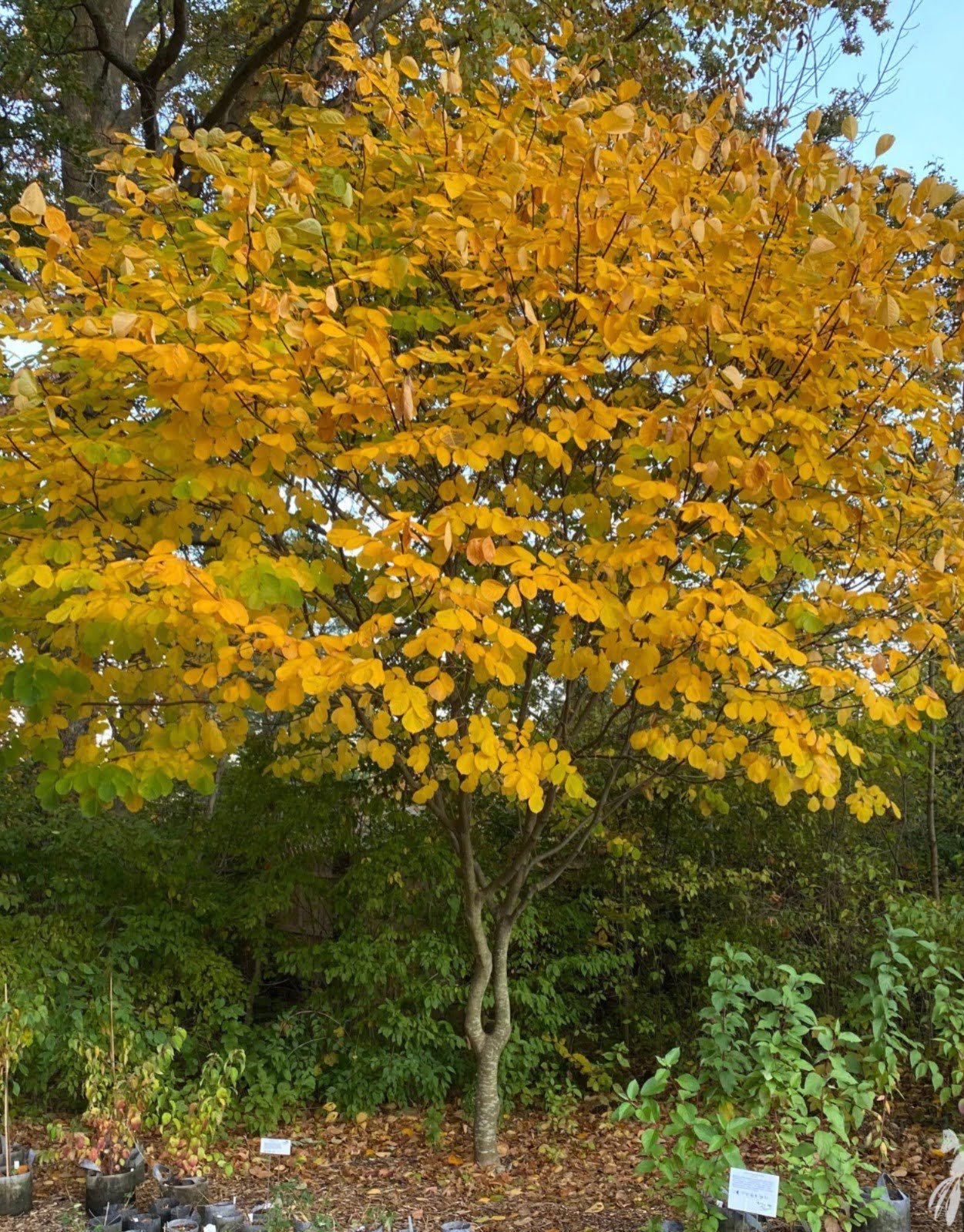
Here’s a concise chart with the information you requested for “Umbra lutea,” also known as “Golden Shadows Pagoda Dogwood”:
| Botanical Name | Cornus alternifolia ‘W. Stackman’ |
|---|---|
| Common Name | Golden Shadows Pagoda Dogwood |
| Plant Type | Deciduous shrub |
| Hardiness Zone | USDA zones 3-7 |
| Sun Exposure | Partial shade to full sun |
| Soil Type | Moist, well-drained |
| Watering Needs | Regular |
| Growth Habit | Multi-stemmed, tiered branches |
| Height/Spread | 8-15 feet tall, 10-12 feet spread |
| Special Features | Variegated foliage, golden-yellow edges |
The Umbra lutea, also known as American Yellowwood, is a beautiful tree native to the eastern United States. It’s called Yellowwood because its heartwood (the inner part of the trunk) is yellow.
Yellowwood trees are medium-sized, usually growing to about 30-50 feet tall. They have smooth, gray bark and leaves that are made up of smaller leaflets. In spring, the tree gets beautiful white flowers that hang in long clusters.
These trees are rare in the wild, but people like to plant them in parks and gardens. They’re great shade trees and look beautiful when they’re flowering.
Yellowwood trees are good for wildlife. Bees love the flowers and many animals eat the seeds. The wood is sometimes used to make furniture or tool handles.
These trees grow best in areas with mild summers and cold winters. They like well-drained soil and need protection from strong winds.
One interesting fact about Yellowwood trees is that they don’t flower every year. They usually have a big flower show every 2-3 years.
8. Ulmus rubra
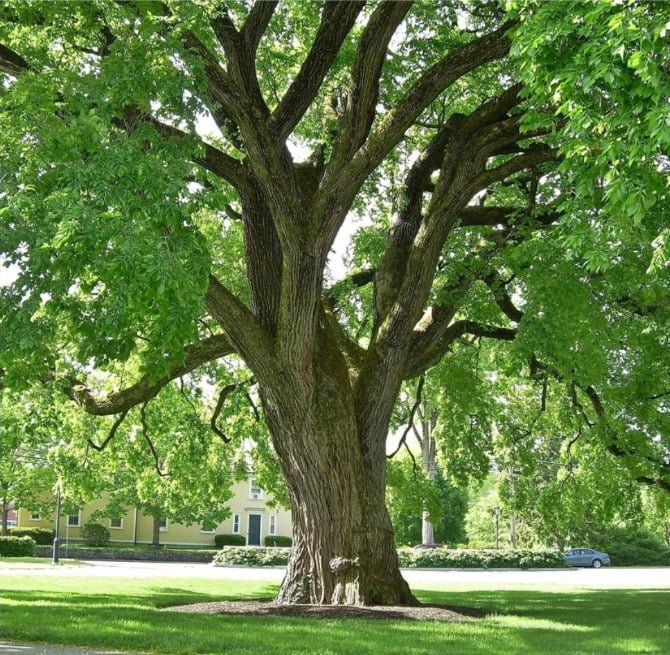
Here’s the information chart for “Ulmus rubra,” commonly known as Slippery Elm:
| Botanical Name | Ulmus rubra |
|---|---|
| Common Name | Slippery Elm |
| Plant Type | Deciduous tree |
| Hardiness Zone | USDA zones 3-9 |
| Sun Exposure | Full sun to part shade |
| Soil Type | Moist, well-drained |
| Watering Needs | Regular |
| Growth Habit | Broadly oval canopy |
| Height/Spread | 40-60 feet tall, 40-60 feet spread |
| Special Features | Rough-textured leaves, medicinal bark |
The Slippery Elm is a tree native to North America. It gets its name from its inner bark, which feels slippery when wet.
Slippery Elm trees usually grow to about 60-70 feet tall. They have large, rough leaves that feel like sandpaper. The tree’s branches often grow in a way that makes the whole tree look like a vase.
Native Americans and early settlers used Slippery Elm for many things. The inner bark can be made into a gooey substance that was used to treat sore throats and upset stomachs. Some people still use it as a natural remedy today.
The wood of the Slippery Elm is strong and flexible. It’s been used to make things like hockey sticks, boat parts and archery bows.
These trees are important for wildlife. Many animals eat the seeds and bark. Birds often nest in Slippery Elm trees.
Like other elms, Slippery Elms have been affected by Dutch elm disease. But they’re a bit more resistant than some other types of elm.
Trees that start with ‘U’ might not be as well-known as some other trees, but they’re just as important. From the tough Siberian Elm to the useful Slippery Elm, each of these trees plays a special role in nature.
These trees show us how diverse the plant world is. Some give us food, others provide homes for animals and all of them help make our planet healthier.
Next time you’re outside, look around for trees. Maybe you’ll spot one of these ‘U’ trees! Remember, every tree is important, no matter what letter it starts with.
By learning about different trees, we can better understand how to take care of our environment. So let’s appreciate all trees, from A to Z!